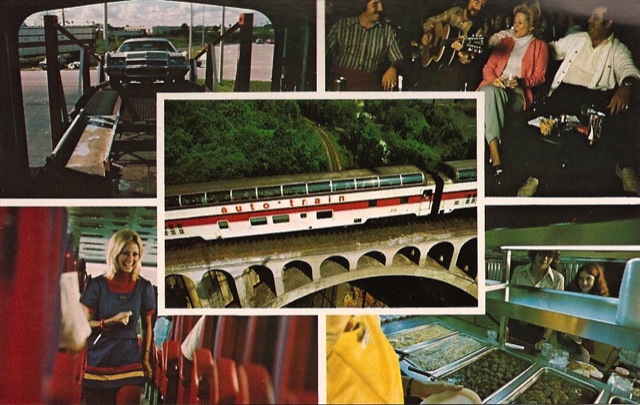The Auto Train, which carries passengers and their autos between Virginia and Florida, was a “private failure” but a “public success,” says the January, 2013 issue of Trains magazine. For those who don’t know the story, the Auto-Train began as a private venture when a Department of Transportation employee named Eugene Garfield took a DOT feasibility study and $56,000 of his own money to begin the service from Lorton, Virginia (outside of DC) and Sanford, in central Florida. When it began service a few months after Amtrak took over most of the nation’s passenger trains, the Auto-Train was heralded as a great success, earning a profit as early as its second six-months of operation.
The original Auto-Train.
In 1974, however, Garfield bet the company starting a second route from Louisville to Florida, hoping to capture some of the Chicago market. Even without this failed investment, the profits Auto-Train reported only covered operating costs, not maintenance. As so many railroads have done in the past, it was deferring maintenance hoping for more profits to cover those costs in the future. That deferral contributed to at least two accidents that cost the company millions of dollars. The hoped-for long-term profits didn’t happen–Trains reports that it only netted a profit in 1973, ’74, and ’75–and the company went out of business in 1981.








